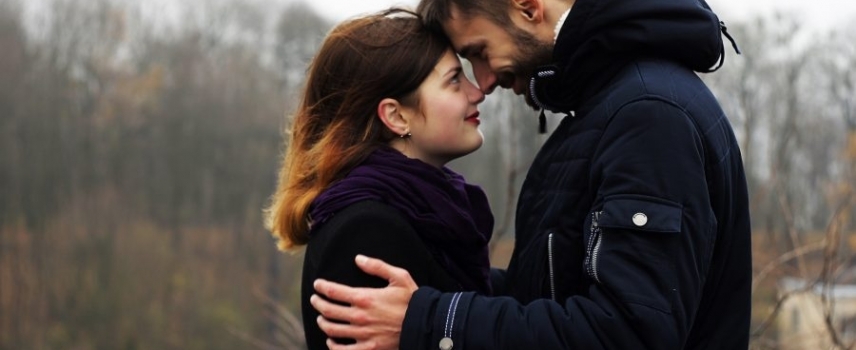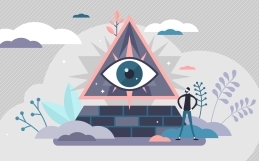Many people, when they experience trauma of some kind, retreat into isolation. This is a natural reaction, because when you go through trauma, your view of the world is totally turned upside-down. A once predictable world comes to feel much more unpredictable, and locking yourself in can make you feel better in the moment—no doubt it’s easier than venturing out into an unpredictable world. While being aware of the space and time you need is important for healing, isolation won’t help you grow more resilient. The main ingredient in the healing and recovery process is connection with others who can validate, identify, and understand your feelings.
When we’re separated from someone important to us, it doesn’t feel so great. In what he called The Still Face Experiment, Dr. Edward Tronic looked at what happens to infants when their parents are present but not responsive or engaged. This experiment showed that even with a parent physically present, infants become distressed if there’s an absence of meaningful connection. When the parents in the study reconnected and engaged with their infants, it created a sense of normalcy and peace.
It usually doesn’t take much to form a connection. Even something simple like slowing down to be present, giving a hug, or making eye contact can create a closer connection. Studies have shown that gentle and kind touch with the people we trust affects us positively, both emotionally and physically. Even a brief encounter boosts oxytocin levels in the brain, thus generating a sense of optimism, trust, and self-esteem. Elevated oxytocin levels are shown to reduce blood pressure, improve digestion, decrease intestinal inflammation, and reduce anxiety. Sounds pretty great, right?
The bond between two people is necessary for their resilience in the face of life’s setbacks. Since we now know about the power of connection to be healing, finding ways to make it happen is key to a better quality of life. There are three important ways we can form healing connections, and studies show that all it takes is a little intention and focus.
1. Internal
Research shows that stimulating both sides of the brain can support emotional processing. A therapy known as Eye Movement Desensitization and Reprocessing (EMDR) is one of the best-known ways to create this kind of stimulation for the purposes of healing from trauma. We can use our brains in this same kind of way by engaging in activities such as running, drumming, or knitting.
Music has also been shown to help promote healing at the emotional and physical level. Important research has provided some evidence that music can affect the body by easing physical pain, improving performance, enhancing recovery, improving sleep, and increasing blood flow in the body. Music also provides benefits like reducing stress and depression, enhancing mood, stimulating the mind, and reducing anxiety. For people who play an instrument, the benefits are actually enhanced by stimulating brain function and providing connections with other musicians or music lovers.
2. Historical
Various cultures recognize the importance of people staying connected to their families of origin and ancestors. In some cultures, people call on their ancestors to guide them and help them understand where they are in their lives today.
If you look at a family’s intergenerational patterns of anxiety or drug use, it’s plain to see that unhealthy patterns of managing stress get repeated, and children learn their behaviors from their families. Most families have experienced some type of trauma throughout the generations. For those that have lived through historical trauma, such as slavery or genocide, the coping of one generation of survivors can remain with the family for many generations to follow. Trauma and healing leave a powerful mark on individuals and families. Evidence shows that trauma can even alter our DNA!
Understanding how a history of trauma may have changed your family can help you cope in ways that don’t harm you, but instead facilitate the healing process. In order to heal, we must first recognize and deeply understand the horrific experience, coming to terms with its place in our lives and finding ways to resolve it within ourselves, our families, and our communities. It’s from that place that what seemed to be meaningless cruelty can turn into something very different, maybe even something positive
3. Communal
Spend quality time with people you can trust; this can help you form healing relationships. Some examples of places where you can create these bonds are church, temple, recreational sports leagues, or counseling groups. I can’t stress enough the importance of group support; it’s one of the reasons groups like AA have been so successful. By processing pain together, people forge deep, supportive bonds with one another. Make time to connect with others who can relate and empathize with you, especially in programs and services designed to help you heal and recover.
Doing things together can strengthen the healing bonds that create personal and community resilience. No matter what curveballs life may throw at you, your connectedness with others can help you navigate through it all. It’s tempting to retreat and distance yourself from others when trauma happens or life gets tough; but this only makes it more difficult to heal. Instead of turning away from others, turn toward them. Staying connected with family, friends, and community can have a major impact on your quality of life, helping you cope with life’s struggles.
Did you enjoy reading this article?
Once a week I send out a newsletter with new articles and unique content for readers. It is my way of staying in touch with you and giving you free advice based on some important topics.
Click here to sign up for my newsletter.
Do you know someone that has a tough time in relationships? Steer them to my latest book, “When It’s Never About You: The People-Pleaser’s Guide to Reclaiming Your Health, Happiness and Personal Freedom.” It is available to order here!
Talk soon,
Dr. Ilene





